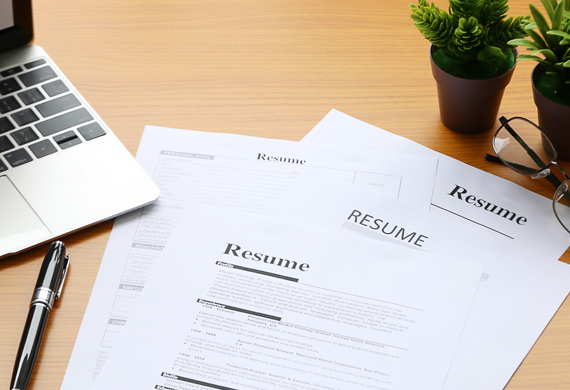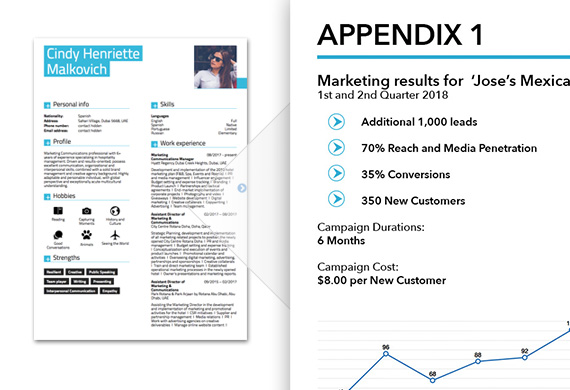Don't miss the job opportunity of a lifetime because your portfolio doesn't present you well. It's time to make an impression with a polished professional portfolio.

When applying for your new position, a portfolio will assist you in showcasing your past work performance, highlighting your skill sets, and catching the attention of your new potential employer.
clashgraphics.com details how to organize and construct your new portfolio while answering some highly relevant frequently asked questions.
What is a Professional Portfolio
Your professional portfolio is an organized collection of information, documents, and specific examples that showcase your work, skills, talents, and professional growth.
What is the Difference Between a Resume and a Portfolio
The differences between a resume and a professional portfolio are the following:
Resume - A resume offers a one or two-sheet snapshot of your work history, education, skills, and accomplishments. However, it rarely conveys an applicant’s true potential or actual qualifications.

Copies of a resume are often included in a portfolio for easy distribution amongst the hiring team of a business or corporation.
Professional Portfolio - A professional portfolio allows an applicant to tell a story about the journey it took to become qualified for the desired position, detailing specific skills developed along the way. Part of a portfolio may be a disk or memory stick with a video presentation or slideshow, further showcasing capabilities and creativity.
However, be aware that portfolios are not suitable when the applicant is applying for a first job or has not worked long enough to garner significant achievements, promotions, or professional growth.
How to Build a Professional Portfolio
The contents of your professional portfolio should represent and highlight the skills and knowledge that qualify you for the position you are attempting to secure.

The following are components which should be included in your portfolio:
Table of Contents - The table of contents is a roadmap that will help your prospective employer navigate through your portfolio with ease.
This table of contents can be created using corresponding color codes or section titles for tabs.
Introduction - Your introduction is what employers will first learn about you. Besides being captivating, it should include a clear statement of your professional goals and philosophy.
Highlighted Experience - This is where you take the employer on a journey of who you are and what you have accomplished. Provide narrative descriptions of the following:
• Academic Work and Achievements
• Public Service / Community Involvement
• Organizational Memberships
• Work Experience
• Leadership Roles
• Teaching Roles
• Conference / Course Participation
• Performance Reviews
• Awards and Recognition
Appendices - These are annotated examples and material which elaborate on your qualifications and experiences referred to throughout your portfolio.

Digital Presentations - Use video or another digital format to present your qualifications and experience. This information can be carried in the portfolio by way of CD, DVD, or memory stick.
Resume - Include several copies for distribution. It is important to consider adding all supporting information relevant to your experience and qualifications.
Portfolio Presentation
Once you have collected and organized your certificates, reviews, awards, and verbiage, it’s time to transform it all into a presentation.
Make sure that all components of your portfolio use high-quality paper, printing and/or reproduction.
There are several ways to present your portfolio:
3-Ring Binder - One of the more common methods is the use of a 3-ring binder with plastic sheet inserts and tabbed dividers.
Presentation Folders and Portfolio Binders - Found in most office supply or stationery stores, these folders and binders can be found in high-grade paper, plastic, and some options in leather.
Order custom presentation folders here clashgraphics.com/categories/Presentation-Folders
Booklet - One way to make yourself stand out is to turn your portfolio into a book. Hand your materials and ideas to the graphic designers at your local print shop and let them turn your common portfolio into a full-color saddle-stitched masterpiece.

Order custom printed booklets here clashgraphics.com/categories/multi-page-booklets
In the creation of this polished portfolio, don’t lose sight and neglect the substance necessary to prove your worth or merit for the position you are seeking.
NOTE: Several employers will stipulate the type and format of resumes they prefer to receive from applicants. In such cases, carefully follow their instructions and give them exactly what they request.
Frequently Asked Questions
Question: Why do I need a portfolio?
Answer: A portfolio is your living and changing documentation of records that represent your accomplishments, skills, and experiences.
Question: What are the three types of portfolios?
Answer: Three major types of portfolios are:
• Working Portfolios
• Display Portfolios
• Assessment Portfolios
Programs and businesses may utilize several types of portfolios with many individual purposes.
Question: Is CV the same as a resume?
Answer: No. Three differences between CVs (curriculum vitae) and resumes are length, purpose, and layout. A resume is a very brief summary of your skills and experience usually kept to one or two pages, while a CV is a more detailed account, able to stretch beyond two pages.
Question: What is a portfolio career?
Answer: A portfolio career is that in which instead of working a single full-time job, you have multiple part-time jobs which may include part-time employment, temp jobs, freelancing, and self-employment; when combined the employment is equivalent to a full-time position.
Portfolio Content and Your Career
Avoid losing your dream job to an ill-prepared presentation. Your professional portfolio is how you can showcase your capabilities, talents, and skill sets.
In this article, you discovered what a professional portfolio is, what should be included in it, how to put it together, uncovered answers to frequently asked questions.
Using the single sheet resume format may end up costing you fantastic job opportunities. Stop under-selling yourself when your knowledge and experience could be showcased in a sharp, professional portfolio.
Sources:
https://www.clarke.edu/academics/careers-internships/student-checklist/resume-writing-and-portfolios/what-is-a-portfolio/
https://careernetwork.msu.edu/resources-tools/resumes/portfolios.html
Clash Graphics Print Shop Atlanta Flyer Printing
2233 Peachtree Rd NE Ste 202 Atlanta, GA 30309
(678) 235-3464
To view the original version on Clash Graphics, visit: https://www.clashgraphics.com/printing-tips/how-to-create-a-professional-portfolio-and-content/